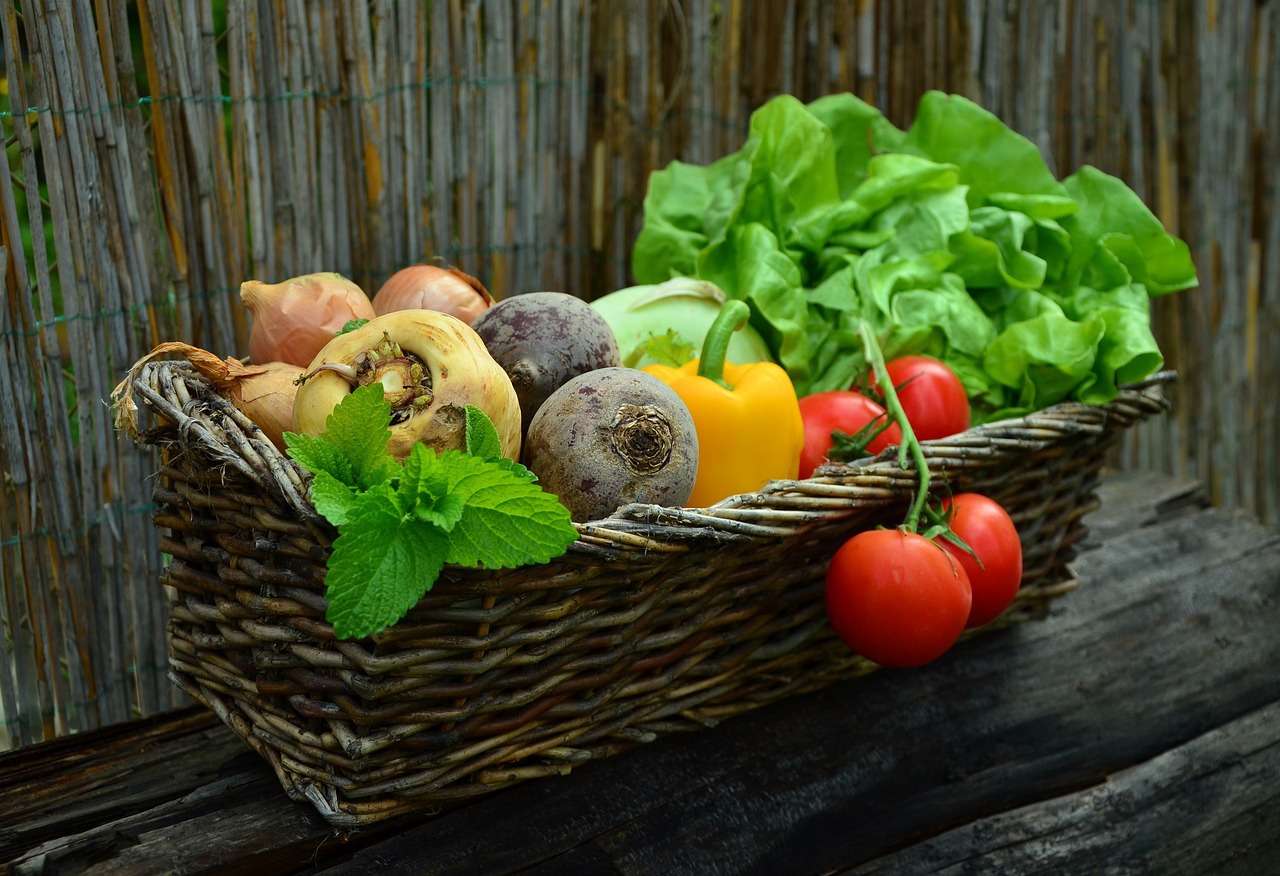/Contribution
Healthy nutrition in the 21st century: an interplay between the individual and society
We are in the midst of a serious health crisis. The World Health Organization (WHO) speaks of an epidemic of non-communicable diseases. In fact, noncommunicable diseases (NCDs) are responsible for a total of 74% of global deaths: 41 million people die from an NCD every year. Cardiovascular diseases are responsible for most deaths, followed by cancers, chronic respiratory diseases, and diabetes1.
There is consensus on the risk factors of NCDs: tobacco and alcohol abuse, as well as physical inactivity and an unhealthy diet, increase the risk of dying from an NCD1. In addition, unhealthy diet and lack of exercise can result in elevated blood pressure, elevated blood glucose, elevated blood lipids, and obesity. These factors are referred to as metabolic risk factors and may in turn lead to cardiovascular disease1.
Therefore, in addition to reducing tobacco and alcohol consumption (see SDG 3 Target 3.5), an active lifestyle and healthy diet are essential to prevent NCDs3, 4, 5, 6. A detailed review of risk factors for the most common NCDs confirms this: the strongest protective factors were healthy diet and physical activity. For example, adherence to a Mediterranean diet resulted in up to 36% risk reduction for all five NCDs7.
Nevertheless, according to the current nutrition report, 41% of the Austrian population is overweight or obese8. The International Diabetes Federation9 projects a 46% increase in global diabetes rates by 2045, and the World Obesity Federation10 reports that the prevalence of obesity is increasing worldwide. The 2021 Global Nutrition Report11 highlights severe nutritional deficiencies, which have not improved over the past decade. For example, fruit and vegetable intake is still about 50% below the recommended five servings per day. In contrast, the consumption of sugary drinks, which is strongly discouraged, is steadily increasing11.
For the most part, there is scientific consensus on what a healthy diet should roughly look like4. It can be assumed that in higher-income countries there are mostly sufficient resources available to opt for the recommended diet. However, there is obviously an extreme discrepancy between current research knowledge and actual individual behavior.
At the same time, nutrition and diet tips are piling up on the web. The global market for weight loss products and services was estimated at over 250 billion dollars in 202112. Recommendations range from "don't eat too much sugary food“13 to "there's real fat-killing power in grapefruits“14. This suggests healthy eating is a personal choice and, as a corollary, the individual is responsible for his or her health or, in the case of obesity, chronic disease. Crawfordt15 was quick to criticize that for many diseases, the individual's risky behavior is seen as the cause of the problem and a lifestyle change by the individual is seen as its solution.

Source: Pixabay
To hold a person completely responsible for his or her eating behavior assumes that people proceed purely rationally and make decisions whose reasons they can explicitly state. However, it is now recognized that food choice decision making is a complicated process: an interplay between internal (e.g., interoceptive hunger signals, dietary self-control) and external factors (e.g., family eating habits, food marketing)16, 17, 18, 19. In fact, eating behavior is strongly based on habits, as people strive to minimize the cognitive resources expended in decision-making processes16, 20. To develop effective interventions and prevention programs, we need to understand and address the emergence of health-risk patterns in dietary decisions.
Fundamentally, the physiological need for food causes humans to eat. Evolutionarily, this ensures that energy is consumed as soon as it is available and thus can be stored for times of food scarcity21. However, food in modern societies is characterized by availability, affordability, taste, and successful marketing19. Or, as Klotter and Endres put it, we live in a "land of milk and honey" (p. 1)22. This becomes a problem in that the rewarding properties of food can override basic satiety signals. Leng et al.19 explain that when certain foods are ingested, there is a sudden surge of dopamine in the brain's reward system. This process, which has a strong reinforcing effect, is common to palatable foods and drugs21.
In order to reduce the cognitive resources used in decision-making situations, people also resort to a number of heuristics. Consumers often find it difficult to process all the available information to evaluate the healthfulness of foods. Therefore, they rely heavily on sensory stimuli (e.g., the association blue/green = healthy in relation to packaging color) or on their intuition23. Here, however, they usually make a number of systematic errors. For example, it is well known that labels such as "organic" or "low cholesterol and fat" carry a strong halo effect16, 24, causing consumers to believe that these foods are more health24, 25. Another misconception is that expensive foods are automatically healthier23, 26. Thus, in our everyday consumption, we are anything but rational actors. Not only do we use evidence-based information, but we are influenced by a broader information environment shaped by cultural factors, advertising, and other media.

Children are particularly vulnerable to the negative effects of food advertising, which is known to promote hedonistic, taste-oriented, and unhealthy food choices17. However, it is essential that children learn to make healthy eating choices because once established eating habits tend to be stable. Several studies (for a review, see Nicklaus & Remy, 201327) have shown that food preferences developed early have a long-lasting influence. This effect is evident, for example, in newborns: if they are exposed to a range of vegetables at an early age, their subsequent intake of and preference for vegetables increases28. According to Köster18 , many learning processes related to food preferences take place unconsciously. Especially at a young age, children are strongly influenced by the praise and approval of their parents. Somewhat later, the eating behavior of adolescents is shaped by imitation learning of their environment18. Here, parents or the family environment have a particularly influential role model function16, 29. According to Köster18 , it is precisely these unconscious eating habits learned in childhood that are particularly resistant to change, which is why it makes sense to invest in healthy eating programs at an early age. However, the family is not only relevant as a social learning environment. Based on twin studies, it is estimated that BMI is approximately 77% heritable30. The cognitive component of decision making is then added, especially in adulthood18. Thus, the family system or social environment plays an active role in developing and promoting behaviors that will permanently shape a person's eating habits.
The above factors should give an approximate idea of the complexity and multi-faceted nature of eating habits. Of course, many other components also play an essential role in this process (e.g., socioeconomic status19, 29).
In summary, healthy eating is not a purely individual challenge, but a societal one. An interdisciplinary review31 shows that most research emphasizes biological, psychological, and product-related predictors, while political influences on food choices are hardly considered. However, it is not enough to call on consumers:in to be more conscious of their food choices and to encourage healthy eating. For example, according to Leng et al.19 blame and shame strategies directed at individuals that deny the underlying pathology of obesity are ineffective or possibly even counterproductive. The factors that promote an obesogenic environment must be identified and remedied. At the same time, an environment must be created in which it is easy to make healthy choices.
Literature:
[1] WHO. (n.d.). Noncommunicable diseases. Retrieved December 27, 2022, from https://www.who.int/health-top...
[2] WHO. (2022, September 16). Noncommunicable diseases. https://www.who.int/news-room/...
[3] International Agency for Research on Cancer. (2018). IARC Monographs on the Evaluation of Carcinogenic Risks to Humans: Red Meat and Processed Meat. https://monographs.iarc.who.in...
[4] WHO. (2020, April 29). Healthy diet. https://www.who.int/news-room/...
[5] WHO Regional Office for the Eastern Mediterranean. (2019). Healthy diet. https://apps.who.int/iris/bits...
[6] World Cancer Research Fund/American Institute for Cancer Research. (2018). Diet, Nutrition, Physical Activity and Cancer: a Global Perspective. http://gco.iarc.fr/today
[7] Peters, R., Ee, N., Peters, J., Beckett, N., Booth, A., Rockwood, K., & Anstey, K. J. (2019). Common risk factors for major noncommunicable disease, a systematic overview of reviews and commentary: the implied potential for targeted risk reduction. Therapeutic Advances in Chronic Disease, 10, 1-14.
[8] Bundesministerium für Gesunheit und Frauen. (2017). Österreichischer Ernährungsbericht. https://broschuerenservice.soz...
[9] International Diabetes Federation. (2021). IDF Diabetes Atlas 10th edition. www.diabetesatlas.org
[10] World Obesity Federation. (2022). World Obesity Altlas 2022. www.worldobesity.org#worldobesityatlas
[11] Development Initiatives. (2022). 2021 Global Nutrition Report: the state of global nutrition. https://globalnutritionreport....
[12] BBC Reserach. (2021). Global Weight Loss Products and Services Market (Issue August). BBC Publishing.
[13] Spritzer, F. (2020, February 24). 10 Effective Tips to Lose Belly Fat (Backed by Science). https://doi.org/10.1038/OBY.20...
[14] Brozowski, R. (2022, May 4). Fettkiller: Diese 8 Lebensmittel machen schlank. Gala. https://www.gala.de/lifestyle/...
[15] Crawford, R. (1977). You are Dangerous to Your Health: The Ideology and Politics of Victim Blaming. International Journal of Health Services, 7(4), 663–680. https://doi.org/10.2190/YU77-T...
[16] Bublitz, M. G., Peracchio, L. A., & Block, L. G. (2010). Why did I eat that? Perspectives on food decision making and dietary restraint. Journal of Consumer Psychology, 20, 239–258. https://doi.org/10.1016/j.jcps...
[17] Ha, O.-R., Lim, S. L., Bruce, A. S., Masterson, T. D., & Luo, S. (2022). Editorial: Eating Behavior and Food Decision Making in Children and Adolescents. Frontiers in Psychology, 12, 1-3. https://doi.org/10.3389/FPSYG....
[18] Köster, E. P. (2009). Diversity in the determinants of food choice: A psychological perspective. Food Quality and Preference, 20(2), 70–82. https://doi.org/10.1016/J.FOOD...
[19] Leng, G., Adan, R. A. H., Belot, M., Brunstrom, J. M., De Graaf, K., Dickson, S. L., Hare, T., Maier, S., Menzies, J., Preissl, H., Reisch, L. A., Rogers, P. J., & Smeets, P. A. M. (2017). The determinants of food choice. Proceedings of the Nutrition Society, 76(3), 316–327. https://doi.org/10.1017/S00296...
[20] Khare, A., & Inman, J. J. (2006). Habitual behavior in American eating patterns: The role of meal occasions. Journal of Consumer Research, 32(4), 567–575. https://doi.org/10.1086/500487
[22] Volkow, N. D., Wang, G. J., Tomasi, D., & Baler, R. D. (2013). Obesity and addiction: neurobiological overlaps. Obesity Reviews, 14(1), 2–18. https://doi.org/10.1111/J.1467...
[22] Klotter, C., & Endres, E.-M. (Eds.). (2020). Gute-Böse Lebensmittelindustrie: Ein Diskurs der Ernährungsakteure. Springer. https://doi.org/https://doi.or...
[23] Chan, E., & Zhang, L. S. (2022). Is this food healthy? The impact of lay beliefs and contextual cues on food healthiness perception and consumption. Current Opinion in Psychology, 46: 101348. https://doi.org/10.1016/j.cops...
[24] Lee, W. chen J., Shimizu, M., Kniffin, K. M., & Wansink, B. (2013). You taste what you see: Do organic labels bias taste perceptions? Food Quality and Preference, 29(1), 33–39. https://doi.org/10.1016/J.FOOD...
[25] Andrews, J. C., Netemeyer, R. G., & Burton, S. (1998). Consumer Generalization of Nutrient Content Claims in Advertising. Journal of Marketing, 62(4), 62–75. https://doi.org/10.1177/002224...
[26] Haws, K. L., Reczek, R. W., & Sample, K. L. (2017). Healthy Diets Make Empty Wallets: The Healthy = Expensive Intuition. Journal of Consumer Research, 43(6), 992–1007. https://doi.org/10.1093/JCR/UC...
[27] Nicklaus, S., & Remy, E. (2013). Early Origins of Overeating: Tracking Between Early Food Habits and Later Eating Patterns. Current Obesity Reports, 2(2), 179–184. https://doi.org/10.1007/S13679...
[28] Hetherington, M. M., Schwartz, C., Madrelle, J., Croden, F., Nekitsing, C., Vereijken, C. M. J. L., & Weenen, H. (2015). A step-by-step introduction to vegetables at the beginning of complementary feeding. The effects of early and repeated exposure. Appetite, 84, 280–290. https://doi.org/10.1016/j.appe...
[29] Liu, K. S. N., Chen, J. Y., Ng, M. Y. C., Yeung, M. H. Y., Bedford, L. E., & Lam, C. L. K. (2021). How does the family influence adolescent eating habits in terms of knowledge, attitudes and practices? A global systematic review of qualitative studies. Nutrients, 13, 1-29. https://doi.org/10.3390/nu1311...
[30] Wardle, J., Carnell, S., Haworth, C. M. A., & Plomin, R. (2008). Evidence for a strong genetic influence on childhood adiposity despite the force of the obesogenic environment. The American Journal of Clinical Nutrition, 87(2), 398–404. https://doi.org/10.1093/AJCN/8...
[31] Symmank, C., Mai, R., Hoffmann, S., Stok, F. M., Renner, B., Lien, N., & Rohm, H. (2017). Predictors of food decision making: A systematic interdisciplinary mapping (SIM) review. Appetite, 110(March), 25–35. https://doi.org/10.1016/J.APPE...
